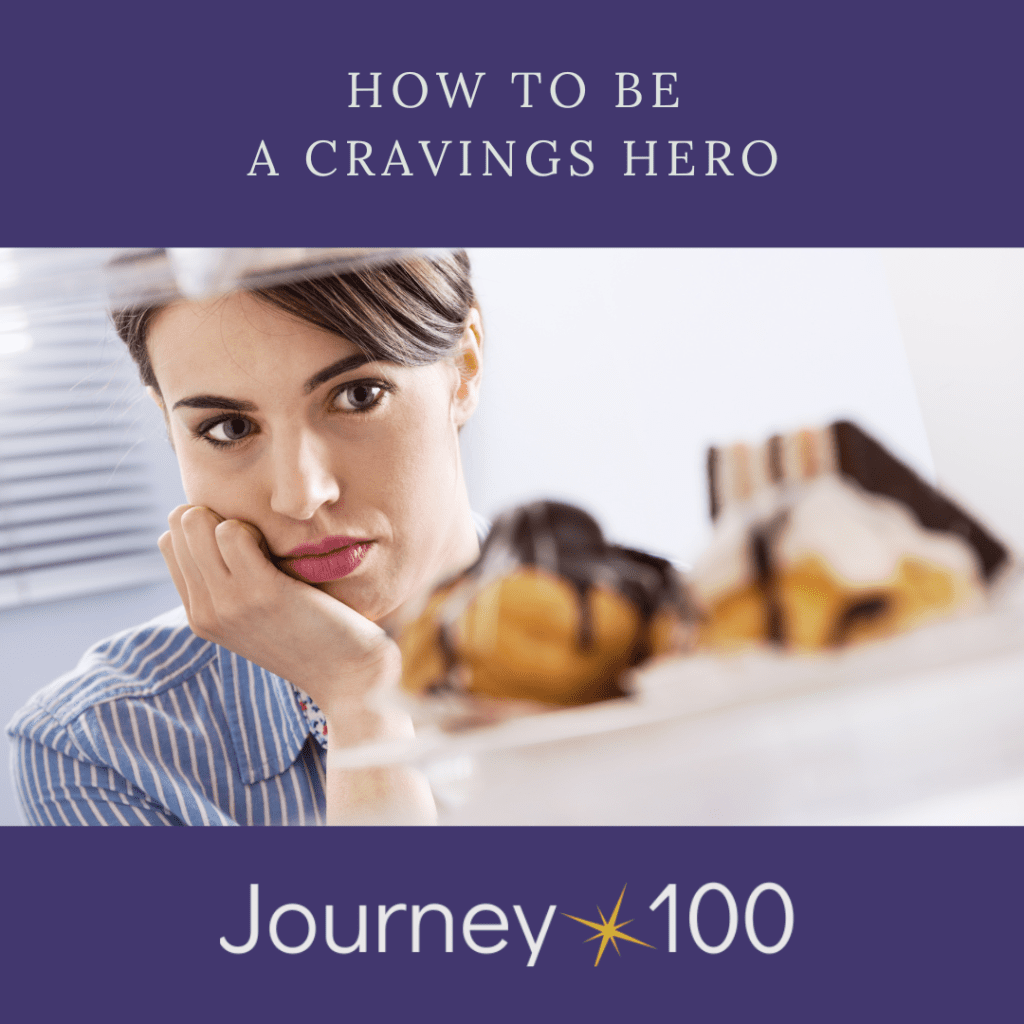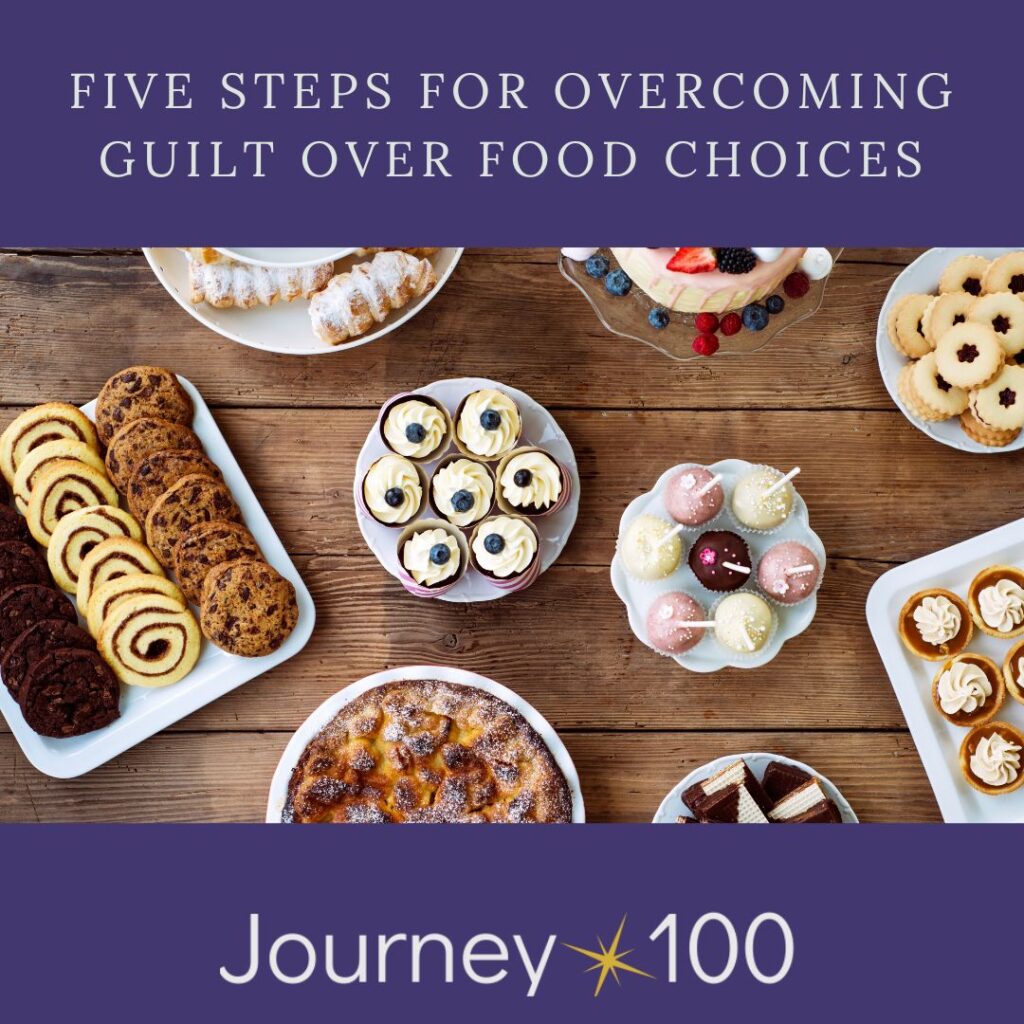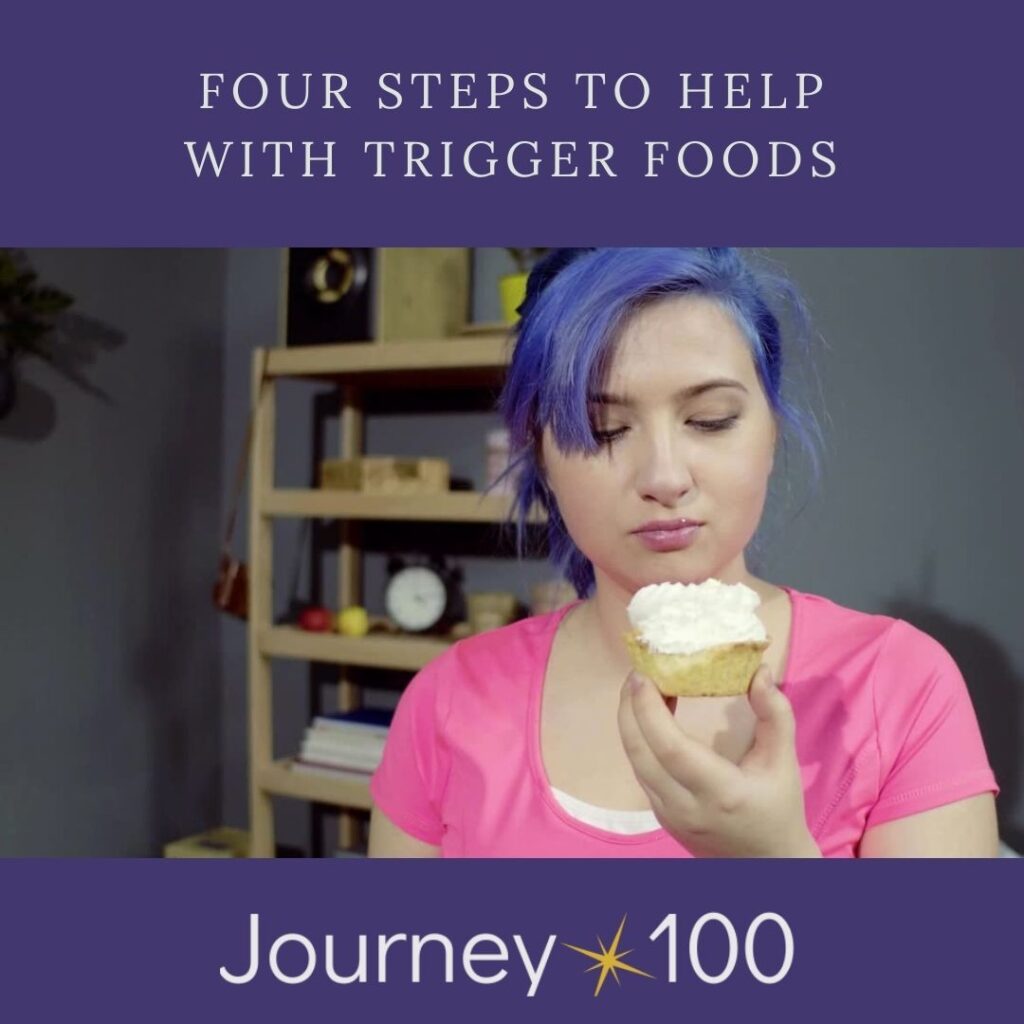How to be a Cravings HERO

Cravings and urges for foods are a part of the human experience. But when you are trying to lose weight and urges for crave-worthy foods come up, this can cause problems for your weight loss. Below I’m going to teach you how to be a cravings hero instead of a weight loss zero. Acknowledge the craving When you have a craving, the first step to being a cravings hero is to acknowledge it. You can’t step up to be the hero until you know there is a problem. Acknowledging it isn’t hard. All you have to do is say to yourself “I’m having a craving for some chocolate” or “I’m having an urge to eat potato chips.” Acknowledging this thought it key to bringing your awareness to the situation. It helps you to start slowing down your thoughts and engaging your logical brain. There is nothing right or wrong about having a craving. It’s something that happens. Sometimes the simple act of acknowledging it and telling yourself this is normal is enough to take the pressure off. Change the scenery Yes, go somewhere else. You can make allowing a craving to pass much easier on yourself when you leave the area where you first felt that craving. Often our cravings happen in the kitchen. Take a three minute walk to the mailbox, go to your bedroom or any other part of the house. Changing the scenery gives you the time and space to consider how you want to react to that craving. It is difficult to think through your choice when the food item that triggered the craving is staring you in the face. Taking just a few minutes to go somewhere else gives you the opportunity to reset and think through how you want to respond. This is normal and temporary Often the biggest frustration about cravings is that we don’t think they should be happening. We want to pick a diet plan and stick to it perfectly without any bumps or hiccups. But that’s not real life. Bumps, hiccups and cravings are all a part of the game. You can take a lot of pressure and frustration off your weight loss journey by simply accepting that this a normal part of the process. After you remind yourself that cravings are normal, remind yourself that they are also temporary. They do not last forever. Cravings don’t just going away by giving into them. There have been many times where I have wanted some potato chips or chocolate and didn’t have any in the house. I was too lazy to go to the store and get them so I just went without it. And guess what? Eventually I stopped thinking about it and moved on. The craving went away. You’re in control Whether it feels like or not, you are always in control. If you decide to eat the food or not, you did so because you decided to. This is a beautiful thing. It’s not the delicious looking slice of cake that made you eat it. It wasn’t the bag of popcorn that moved your hand up to your mouth. You always get to decide and take action. There is no right decision either. You can decide to eat it, decide to plan for it another time or decide not to eat it at all. Those choices are available to you. Consider your weight loss goal and how each decision will affect it. As long as you like your reasons then go for it! On my weight loss journey, no foods were off limits but I made a food plan each day and if the craving food wasn’t on the plan, I didn’t eat it. I would choose to write my craving food on my plan for the next day as a way to keep my promise to myself that day but also acknowledge that if I wanted something and I could truly have it when it was planned for. Celebrate it Eating food is a pleasurable activity. When we say no to cravings because we “shouldn’t” it can feel like punishment or restriction, which is not pleasurable at all. If you decide to eat the food but followed the process above, that’s something to celebrate! If you decided to plan for the craving food for another time and delay gratification to be more intentional in your choice, another great celebration. If you decided not to eat the food now or later, wonderful! In any of these situations, you are becoming more aware and intentional in your choices and that is something to celebrate! Your coach, Andrea
Five steps to overcoming guilt over food choices

Feeling guilt over your food choices? Living in a world where the diet industry makes billions of dollars and offers contradictory information at best, it is no wonder that many of us feel that there are “good” or “bad” foods and feel immense guilt over our food choices. So how can you live a normal life eating the foods you enjoy without feeling guilty afterwards? These five steps will help you overcome guilt over your food choices: Step One: Awareness First, take an inventory of the times you feel guilty after eating certain foods. Make a list of all of those foods. If you are not quite sure, carry a piece of paper with you to make notes throughout the day of the foods you ate and how you felt afterwards. This is an important part because you need to know what the problem is to figure out the solution. Another way to get this information is through visualization. Maybe there are foods that you don’t keep in the house? Think about what it would be like to eat them. You can also visualize yourself eating things that the diet industry often calls “bad,” like sweets, candies, carbs or fast foods. If you feel guilty, put it on your list. Step Two: Normalize You are not broken if you feel guilty after eating some sweets or potato chips. It is very normal in the American culture to think of foods as “good” or “bad.” The diet industry popularized this idea to keep people following the prescribed diet they are selling. We have been taught that we are weak, uncommitted or undisciplined when we eat these “bad” foods. Even desserts are described as sinful. But this is nothing but a story that the diet industry has told us to convince us that we need their help to be successful in our weight loss journey. So be kind to yourself. Remind yourself that many people struggle with the idea of “good” and “bad” foods. And just as many feel guilty after eating certain foods too. Step Three: Be compassionate Guilt is often brought on by the way we talk to ourselves after we eat certain foods. Watch for that inner voice that uses should or shouldn’t and condemns you as a flawed person for making that choice. What would you say to a young child who ate a few too many cookies and had a tummy ache? Would you condemn them as having no self-control? Would you tell them this single act is the reason they will always be fat and ugly? I hope not. And you don’t deserve that either. That young child needs some comfort and to learn how to listen to their body the next time they eat cookies. The cookies aren’t bad but eating past the point of enough results in feeling sick. They need words of comfort and hope that the future will feel better than it does now. And so do you. Yes, maybe you over-did it on the cookies too. That doesn’t make you a terrible person. It means you also need words of comfort and hope that the future will feel better. Step Four: Retrain your brain How do you make the future feel better? Retrain your brain. Guilt is a feeling that is created when you think you have done something “bad.” Thoughts like “I’m so weak and will never be able to lose my weight” or “I knew I couldn’t control myself around those potato chips” or “I always stuff my face like a pig when we have pizza” all create feelings of guilt. The key to feeling better is to replace those guilt producing thoughts with thoughts that create hope for you. Here are some that my clients find very helpful: I’m learning to be at peace with my food choices. Today’s actions do not determine the entire course of my life. Even when I feel guilt, I can go on to make a good decision. Food is food and I’m a good person no matter what I choose to eat. Step Five: Get help Many of us have spent decades repeating the “good” food, “bad” food narrative in our heads. It takes time to unwind those thoughts and practice new ones. If you are willing to put in the daily practice you can absolutely change those narratives, heal your relationship with food and stop feeling guilty for your food choices. But sometimes the work to undo those narratives seems too difficult or you may want those results faster and that’s where I come in. As a weight loss and life coach, I can help identify those thoughts quickly and help you replace them. As a person who has lost over 93 pounds, I know what you are going through and can help you on your journey. If you want help identifying where the guilt over food is coming from, I can help you. Sign up for a 30-minute call with me today. Your coach, Andrea
Five thoughts that kept me FAT

For all of my adult life, I felt stuck. It felt like my fate in life was to be overweight. I tried and failed so many diets that I figured I was just broken. In reality, the only thing that was broken was my thinking. Here are five thoughts that kept me FAT: I don’t feel like it This thought kept me waiting for the motivation fairy to drop in and fill me with motivation to do the things I didn’t feel like doing. In reality, feeling like doing something is never a requirement. We do so many things in our every day lives that we probably don’t feel like doing. For instance: paying bills, changing dirty diapers, following speed limits, chores around the house, attending meaningless work meetings, etc. You don’t feel like doing them but you get it done anyway. The motivation to do something doesn’t come from an outside source. Motivation is created by you. If you are still waiting around for motivation to strike, check out this blog post on “How to find your weight loss motivation in 3 easy steps.” Quit using “I don’t feel like it” as an excuse to remain the same. Instead tell yourself “I don’t have to feel like it to do what’s best for myself.” I deserve to eat whatever I want This kept me feeling entitled to eat indulgent foods all day, every day. ALL the diets I had been on before left me feeling restricted and deprived. And I hated it! I didn’t want to feel that way so I told myself “I deserve to eat whatever I want.” But the truth of the matter is I always have a choice in what I eat. Whether I am on a restrictive diet or eating everything in sight, it is because I am choosing to do so. Continuously telling myself that I deserved to eat whatever I wanted also left me feeling entitled to a party in my mouth each time I ate. I only thought about amazing and entertaining foods I wanted to eat. Foods that nourish my body and help it perform at its best were rarely considered. Once I changed by thought from “I deserve to eat whatever I want” to “I can eat whatever I want however I choose to eat healthier so I can achieve my health goals,” I finally found a balance between nourishing my body, eating foods that were entertaining AND losing weight. I don’t have any willpower Another thought that kept me fat. It reinforced that I was broken and there was no hope for change. The reality of willpower is that everyone has it. Some people use their willpower each day and therefore it’s stronger. Others have let it wither away like an atrophied muscle. If you want more willpower, then you have to start using it. Start small. Try leaving one bite behind after each meal. When that starts feeling easy, leave two or opt for half a plate of veggies. These small moments will help strengthen your willpower. The stronger it gets the more you are able to use it throughout your life. A great thought to think instead of “I don’t have any willpower” is “Willpower is a muscle that everyone has and I am working on making mine stronger each day.” I don’t want to miss out on life Oh man. This was a big one. It kept me believing the lie the food is the only source of connection and fun in life. Spoiler: it’s not. In fact, food can often be a distraction to true connection and fun. Food is an activity that many people enjoy doing together however it isn’t a requirement. I am not missing out on life if I choose not to eat or choose to eat differently than people around me. Instead, think of all the ways that being healthier allows you to enjoy your life MORE. This was a game changer for me. I had never considered that my life could actually be better and I could be more engaged if I was losing weight and getting healthier. I could be more intentional in my conversations and interactions with others at parties. I could run and play with my sons. Bucket list items I was sure I could never do become possibilities again….hello standup paddle boarding, indoor skydiving and boudoir photoshoot! Not to mention that getting healthier also means living longer. And not just living longer to be bedridden but living longer with a functioning body. Try thinking “Being overweight taxes my body and shortens my lifespan which truly results in missing out on life.” I’ve failed too many times before. By the time I reached 250 pounds, I had tried and failed at least a dozen diets. I felt like there was nothing left to try that would work for me. I felt so hopeless. Thinking “I’ve failed too many times before” was simply an excuse to stop trying at all. This thought kept me fat because it reminded me how much failure sucked before. It was my way of protecting myself from future pain and humiliation of failing yet another diet. However failure is a natural part of the human experience. If we all stopped doing anything the moment we failed, then none of us would learn to walk. The first time we fell down, we would stay on the ground. But for some reason failing a diet (or multiple ones), seems like a real reason to never try to get healthier again. Maybe I just found dozens of ways that didn’t work for me and that’s OK. That’s actually perfect! Every way that doesn’t work is actually a step closer to finding what DOES work. So instead of the thought “I’ve failed too many times before” that kept me fat, I chose to think “I want to figure out how to live my healthiest life on MY terms.” You can figure out weight loss on
Four steps to help with trigger foods

Trigger foods. Foods you can’t resist. They call out to you and beg you to eat them. Generally, these foods are not carrots, broccoli or apples. They are decadent foods. Often foods that you are forbidden because they are “bad foods” or unhealthy. You probably feel out of control around these foods and blame them for any weight gain. Never fear! If you need help with trigger foods, this post is for you. Here are four step for handling trigger foods like a boss: 1. Quit calling it a trigger food Seems simple right? But every time you call ice cream or chips your trigger food, you give all of your power away to it. It becomes a dramatic story of how this food is the downfall of your weight loss. You are powerless around it and must indulge. Calling it a trigger food puts you and your weight loss at an extreme disadvantage. Many people will tell you that they can’t keep certain foods in the house. And while this is good intentioned that doesn’t mean you will never come face to face with that food. Continuing to have this story in your mind guarantees anxiety, worry, and fearfulness about when you might come face to face with that food. It can also lead to binging on these foods when you finally get the chance because they have become forbidden even though your desire for them is high. Instead of calling them your trigger food, change the story to something more boring, like “It’s just a food you like to eat.” 2. Calm your brain down Our brains have been designed to keep us safe. Back in the times of cavewomen, this meant being able to identify ALL the problems around us that could cause us harm. Life today does not require our brains to find the mountain lion or the poisonous berries. But our brain still wants to do what it was designed to do: FIND ALL THE PROBLEMS. And guess what, your trigger food has been identified as a problem. And that’s OK. Not every problem our brain identifies is a true problem. Nor is every problem our brain identifies a reason to take action. Your brain might tell you things like: “Oh my god, there goes my diet!” “I can never lose weight and have a social life too!” “I will never be able to resist those!” “I can never stop eating….” All of those are just thoughts. Thoughts that are completely optional. Currently those thoughts are full of drama and doom. Calm your brain down by making the story boring. Remember, this isn’t a trigger food. This is just a food I enjoy eating. It can also be helpful to recognize other things you enjoy doing but are able to practice restraint around. I love going for walks on beautiful days but somehow I still manage to go to work and earn a living on beautiful days. I love spending money on cute clothes and yet each month I make sure enough remains in my account to pay the mortgage and utilities. I’m sure you have similar examples in your life. Don’t take what your brain presents you as the truth. Ask yourself if your brain is being dramatic and if you have evidence that the opposite is true as well. 3. Visualize how you want to eat them Now this isn’t a lusty visualization practice. The purpose isn’t to create more desire for the food by imagining how amazing it tastes. This visualization is to practice being around these trigger foods and imagining yourself being in control and intentional about how you eat them. My clients often feel burdened and powerless around these trigger foods. So I ask them to imagine what it would look like to be in control around them. Imagine yourself having your trigger food in your pantry. Visualize yourself going into the pantry for other things and never reaching for that food. Imagine yourself being unaffected that it is sitting there. Another visualization you can do is enjoying the trigger food. Watch yourself plate it, eat half of it and then throwing the rest out. If that causes you some anxiety, remind yourself that you are able to buy more at any time. This food is always available to you. Reminding yourself this can provide comfort that no matter what you are in charge and able to obtain that food whenever you want. It helps take away the scarcity and urgency away from that food. 4. Practice being around them Once you spend time visualizing yourself around these trigger foods, you can practice being around them in real life. Before you do, use that brain for what it was designed for! Ask it what problems might come up that could derail you from showing up as you visualized. Maybe you won’t want to stop eating it. Perhaps you eat the entire box of them. After identifying the potential problems, come up with a game plan. Maybe you start with two cookies on a plate and put the package away. Or you serve some chips and dip and then relocate to another room to enjoy them. Whatever you think might help you stick with your plan that you visualized. Then go for it! Remember, perfection is not a requirement and it is likely that you might have some overeats or completely ignore the plan all together. That’s OK. Progress has already been made by thinking it through beforehand and you’ll get more and more skilled at being around your trigger foods the more you practice. What trigger food will you practice with? Your Coach, Andrea
